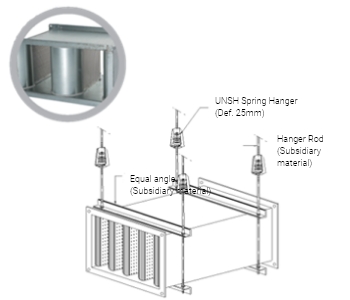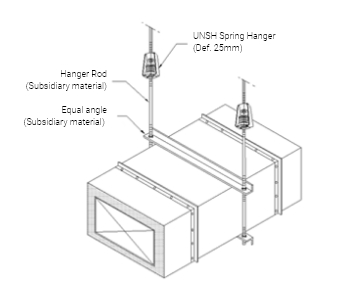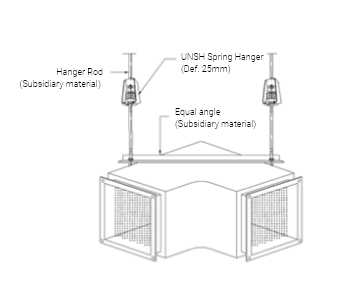Research Field
Measures for Soundproof and Vibration-proof of Air-Conditioning Duct
- Details of Sound Absorber

- Details of Noise Chamber

- Details of Sound Absorbing Duct

- Details of Noise Elbow

How to Select Sound Absorber for Air-Conditioning
Phase 1
- After identifying characteristics (ratio of sound absorption, a diffuser, a radiation ratio etc.) of a room that damages are expected, a type of sources generating noises and sound pressure are selected. The most exact data for sound pressure of sources generating noises are provided by a company and it may be obtained by calculation as necessary.
Phase 2
- Natural noise reduction and the generated noise during noise is transmitted into the indoor space are reviewed.
Phase 3
- The required sound reduction is calculated by calculating and comparing noise of a duct with the allowable noise level (NC, NR) of the determined room with reference to calculation data for characteristics of a room, the generated noise and natural noise reduction that were reviewed at the phase 1 and 2.
Phase 4
- After reviewing the allowable pressure loss based on the calculated required reduction of noise, the standard dimension proper for air volume is selected. The self noise may be prevented only when the passing-through wind speed of a sound absorber is equal to or less than the passing-through wind speed of a duct and the proper noise reduction performance of a sound absorber may be maintained.
- Each room shall keep a distance away from an AHU room and a machine room as much as possible.
- The wind speed of diffusers at each room shall be designed to be low as much as possible.
- Considering external noises, each room shall be reflected on the architectural design so that it can be appropriate for criteria of noises. (Refer to STC penetration grade)





